50 Years of Chrysler Valiant Charger



|
50 years of Charger 1971-2021
While Aussie Rules and Rugby league dominated the sports pages and evening news in the late 1960s as they do today, a (televised) car race up and down a mountain just outside the NSW town of Bathurst was rapidly gathering attention from the wider public.
Car makers sussed this and figured if they impressed at Bathurst, sales would likely follow. And like the previously mentioned footy codes, many families were choosing which make of car to follow, with some deciding by the action on the telly from Bathurst and what sat in their driveway.
This phenomenon began in 1967 when an XR GT Falcon won the big race and Holden did it the following year with their Monaro.
| Read next: 1972 Valiant VH Charger R/T E49 survivor

Chrysler could see the merit in this racing caper and created a warmed version of their Pacer sedan for 1970. Although somewhat successful, It didn’t harvest much attention and sales weren’t headline stuff. But racing whetted the appetite of the senior Chrysler execs and all they needed was a bigger stick to be successful.
Based on a Valiant VH sedan, Chrysler set about cobbling up a two door coupe that was over a foot shorter, with five inches chopped from its wheelbase. The ride height was lowered and track widened. It was badged the Valiant Charger (later Chrysler Charger) and was with us for just seven years.

In that time it made an indelible mark from the moment it saw the light of day for the first time mid-1971. It stunned the industry, especially GMH and Ford.
It also spawned one of the catchiest car ad campaigns of all times; ‘Hey Charger’. Everyone was talking about the ad and the car and giving each other a vee sign salute, just like the television commercial.
The motoring scribblers of the day heaped praise on it and Wheels magazine threw their Car of the Year award at it, writing, "This Charger, the full-house competition R/T E38 is a magnificent motor car. It’s not just a race-bred special but a genuine high performance touring machine. It is in fact the first real driver’s car driver’s car Chrysler Australia has built."
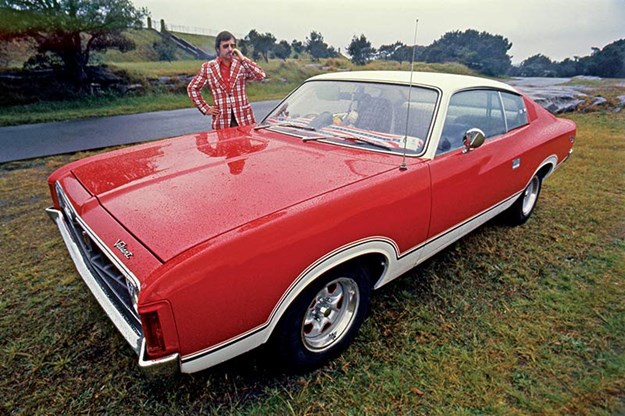
A win on its racing debut was a dream start and when the ads weren’t on the telly a Charger was often found on almost every Aussie drama or cop show of the time. Think Matlock Police, Homicide, Division 4 and Ryan. If the good guys weren’t Charger mounted, the baddies were, with the Charger being the ideal getaway car.
The Charger wasn’t Chrysler’s first crack at a two-door but it’s the one everyone wanted then and now.
Launched in 1971 the Charger was Chrysler’s response to the Ford Falcon GT, Holden Torana GTR XU-1 and the many Japanese coupes intended to meet the growing demand for two door cars with characterful sporty flair.
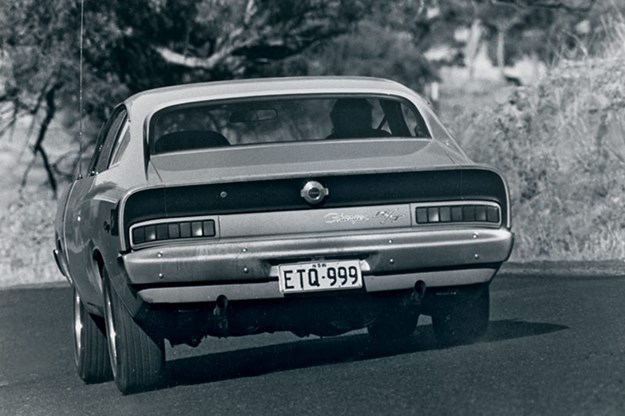
It didn’t take long for the Charger’s popularity to grow so strong it accounted for eighty per cent of all VH Valiant production and blew away the myth of two-door coupes being niche models. It was an instant showroom hero and image maker, especially the R/T models with their bright hues, bold stripes and blacked out panels and raucous exhaust note. Posters of it were splashed over bedroom and garage walls across the nation.
The Charger proved popular across the ditch and were exported in CKD form to New Zealand.

Realising they were onto a once in a lifetime opportunity, the Chrysler folk ensured a broad Charger range to suit all budgets. Even if all you could stretch to was the povo pack, you could still claim Charger ownership and the envy that came with it.
In 1971 the model lineup was Charger, Charger XL, Charger 770 and the Charger R/T models.
Owning a Charger set you back $2795 and got you skinny steel wheels, not a stripe in sight, plain vinyl trim, no radio or heater, three pedals and three on the tree. But you did get the grunty 215ci straight six.

Shell out $1200 more and you could buy the king of the heap, the R/T E49 and its triple Weber fed 265ci, 4.3lt 225kW six and a four-speed manual. However if that was out of reach, buyers opt could for the bog standard Charger and order the 4.3lt straight six that came detuned to 163kW and bolted to a three-speed DIY gearbox.
The 770 Charger and SE were the glamours of the fleet. Powered by the 340ci V8 bolted to a ‘Torqueflite’ 727 auto box. Signature details were combination black and white vinyl trim, a turned metal dash facade and a choice of three colours, Vintage Red, Limelight and Sunfire.
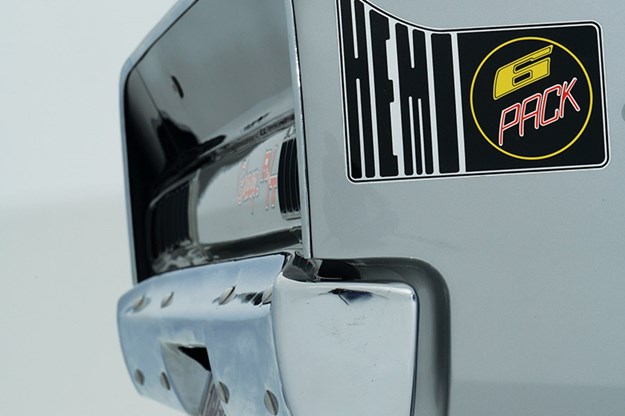
March 1973 saw the VH model replaced by the VJ with changes to the grille and round headlights replacing rectangular. The arrival of the VJ spelled the end of the Charger R/T, which pretty much coincided with Chrysler officially abandoning motorsport at the end of 1972. Buyers could still get their hands on the E37 performance six in the VJ that was recoded to option pack E48. Electronic ignition found its way onto the VJ series meaning the ignition no longer needed tuning every 10,000 kilometres. With the 340ci V8 ceasing production, the 360ci was drafted into the 770 and is referred to as the E 57 option. A limited-edition Sportsman was launched. Confined to 500 units and powered by the 265ci engine and four slot manual they had red and white paintwork with matching red and white tartan pattern interior.
Thirty months after the VJ came the VK, which was basically a facelift and a rationalisation to two variants, the Charger XL and 770. The XL was offered with 3.5lt, 4.0lt and 4.3lt sixes and the 770 the 4.0 and 4.3lt engines plus 5.2lt and 5.8lt V8s. The demise of the E48 six Pack option happened with the introduction of the VK.
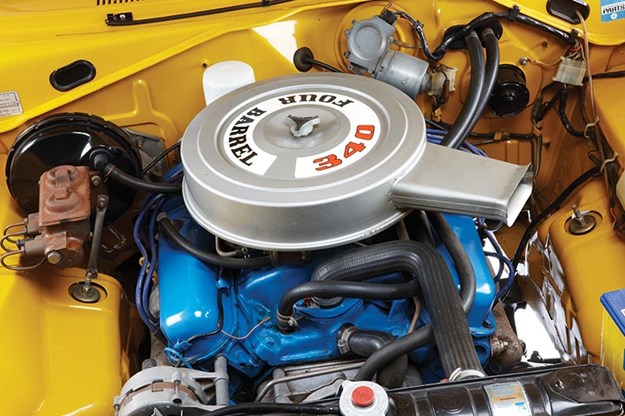
With the VK came a name change from Valiant Charger to Chrysler Charger. Other changes included a ‘white-out’ grille treatment, revised rear lights, new C-pillar ornamentation, while inside the wiper and windscreen washer controls were now integrated with the indicator stalk. Interior trims were revised with Boca-Raton cloth used in the 770.
In June 1976 updated emissions regulations saw the axing of the 3.5lt and 5.9lt V8s.
Another limited edition of 200 units, the White Knight was launched with white vinyl interiors and red accents. All wore a front spoiler and half were painted white with the other half red with matching grilles and bumpers. The White Knight had the 4.3lt engine and a choice of manual or auto gearboxes.

The last Charger was the CL model, introduced late 1976 featuring new bodywork. The XL was dropped, except for police duties meaning only the 770 remained. The final limited edition was offered. Called the Charger Drifter it came on four colours, Spinnaker White impact Orange Sundance Yellow and Harvest Gold. These were basically the same as offered on the Drifter panel van. Engine choices were the 4.3lt and 5.2lt with a 4-speed manual transmission.
On August 16 1978 Chrysler manufacturing ceased and with it one of Australia’s most significant cars.
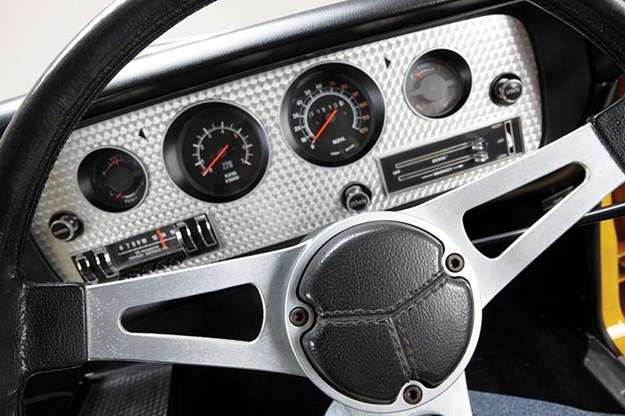
RACING
The Valiant Charger raced in Australia in an official capacity during 1971 and 1972, with a Bathurst win the goal. Gun open-wheeler star Leo Geoghegan was drafted to develop the Charger into a winner. It won on race debut at Oran Park and in 1971 it finished second in class to the Torana GTR XU-1 at Bathurst.
In 1972 with a more powerful engine and four speed manual hopes were high for that win. Third was the best the Charger could muster but it set up a unique podium shared by Holden Ford and Chrysler for the one and only time.
The Charger was set for a V8 for competition, to combat the mooted V8 powered Torana XU-1 and Phase IV Falcon, but the supercar media hysteria hit, quashing all three. Three-time Australian Drivers Champion John McCormack raced a Formula 5000 powered Charger in Sports Sedans. It debuted in 1974 in Ansett colours, and was built in the Adelaide workshop of Harry Aust, a former Chrysler engineer. As was the norm back then, the engine sat inside the cabin, alongside the driver for better weight distribution and the Charger sported many other F5000 components.

POLICE PACK
With the introduction of the VJ came an exclusive option pack codenamed K10.
It was mostly bought by NSW cops for highway patrol use.
The K-10 pack included an E33 265ci motor, D-20 4-speed floor-shift manual, a 2.92 sure grip rear axle, track pack, front sway bar, Charger sports pack instrument panel, dual horns, three spoke steering wheel, 55amp alternator, heavy-duty suspension, front and rear mudflaps, driving lamps, insect screen, mesh sun visor, fire extinguisher and front window shields.
Unique Cars magazine Value Guides
Sell your car for free right here
Get your monthly fix of news, reviews and stories on the greatest cars and minds in the automotive world.
Subscribe

.jpg)


.jpg)







